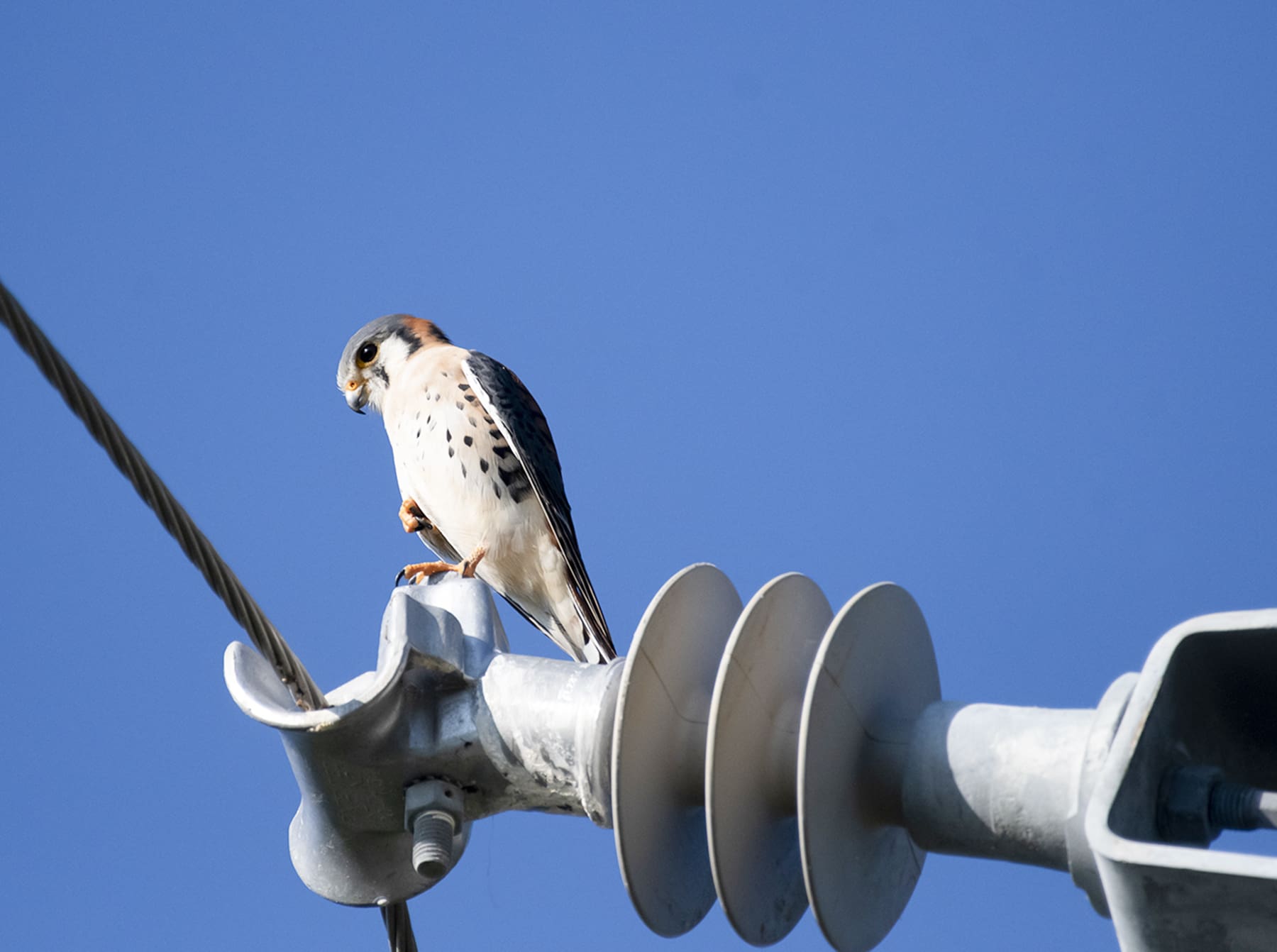
The replacement poles, made out of fiberglass and resin, are designed to be lighter, stronger, and more wind-resistant than the old wooden utility poles. Their installation was largely funded by the Federal Emergency Management Agency and the Housing and Urban Development program as part of a larger effort to strengthen the Virgin Islands’ grid infrastructure following the extensive damage caused by Hurricanes Irma and Maria.
The wooden poles have now mostly been replaced, and already some concerns have been raised about the relative strength of the new poles. Especially when cars run into them.
However, I wonder if much thought has been given to how these new poles affect the birds living in the Virgin Islands.
American Kestrels are small falcons (about 9-10 inches in length) with sharp wings, longish rust-colored tails, and prominent dark streaks under their eyes. They live year-round across much of the United States and the Greater Antilles and are common nesting residents in the Virgin Islands. They can often be seen sitting on high perches, scanning for the lizards they like to eat, along with occasional mice or large insects. They swoop down quickly to nab their prey and then often return to the perch to eat.
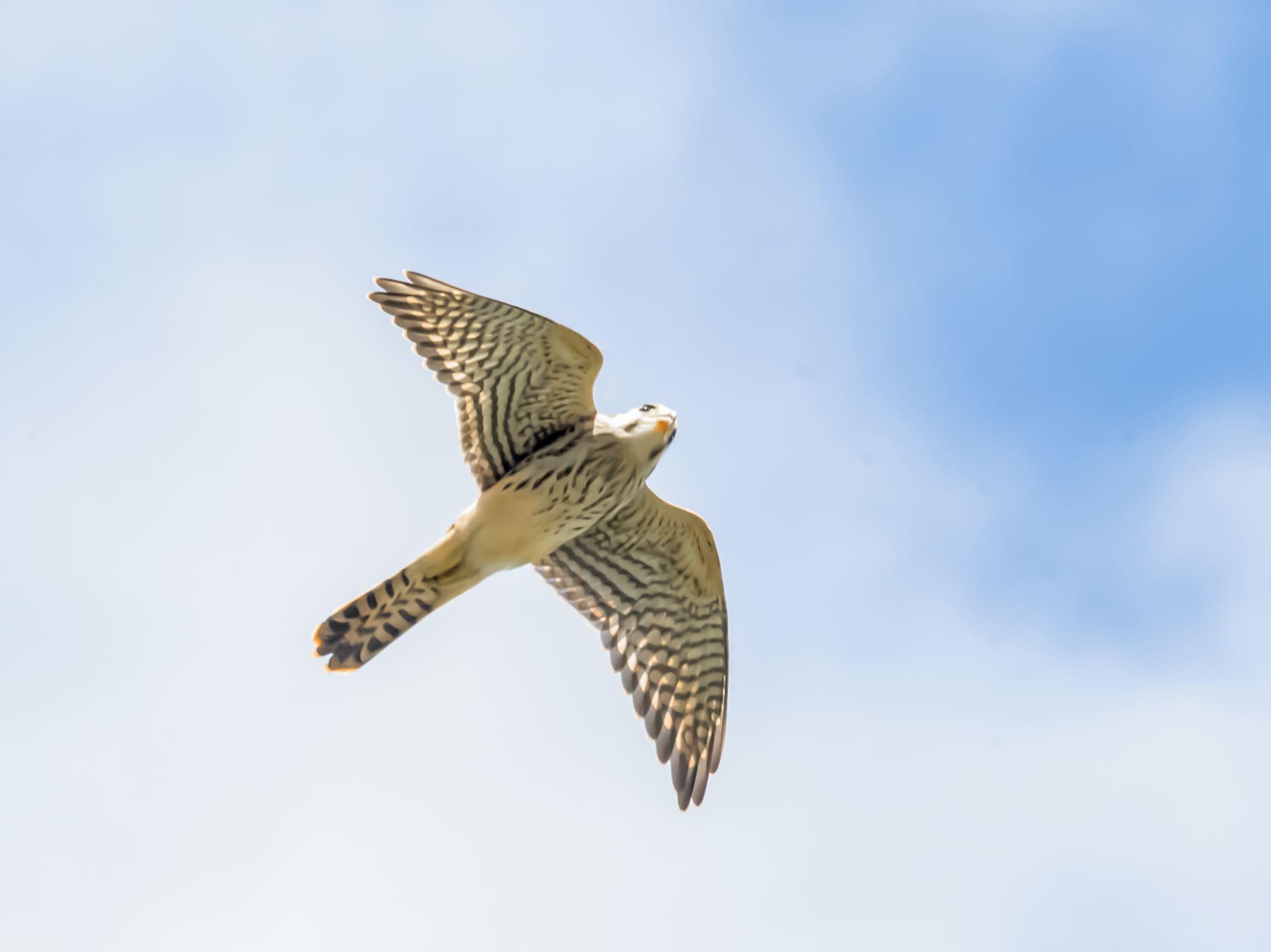
The flat tops on the old wooden poles provided platforms for important kestrel activities, including hunting, eating, courting and mating.
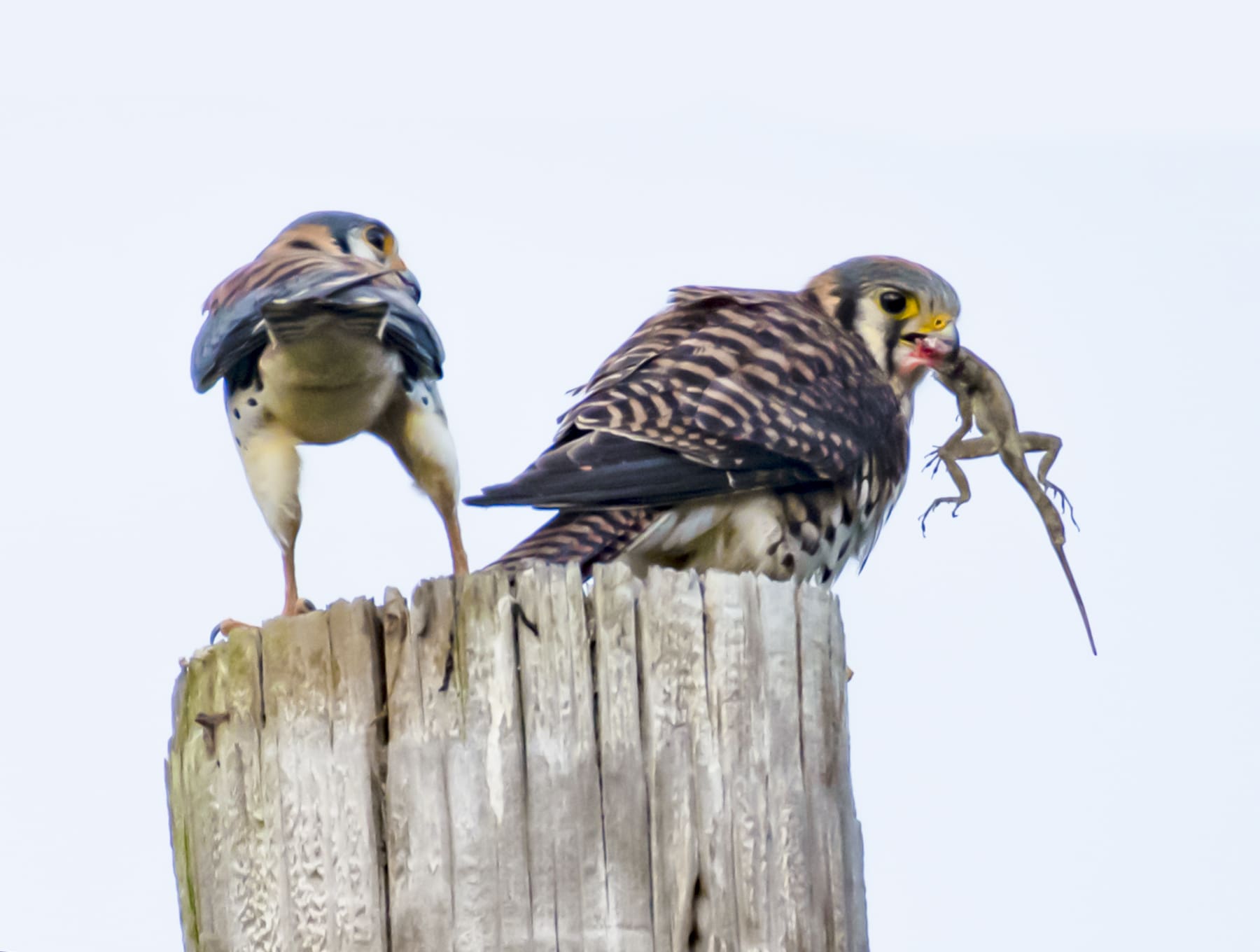
But the new poles have pointed tops specifically designed to prevent birds from perching on them. So the kestrels have had to adapt.
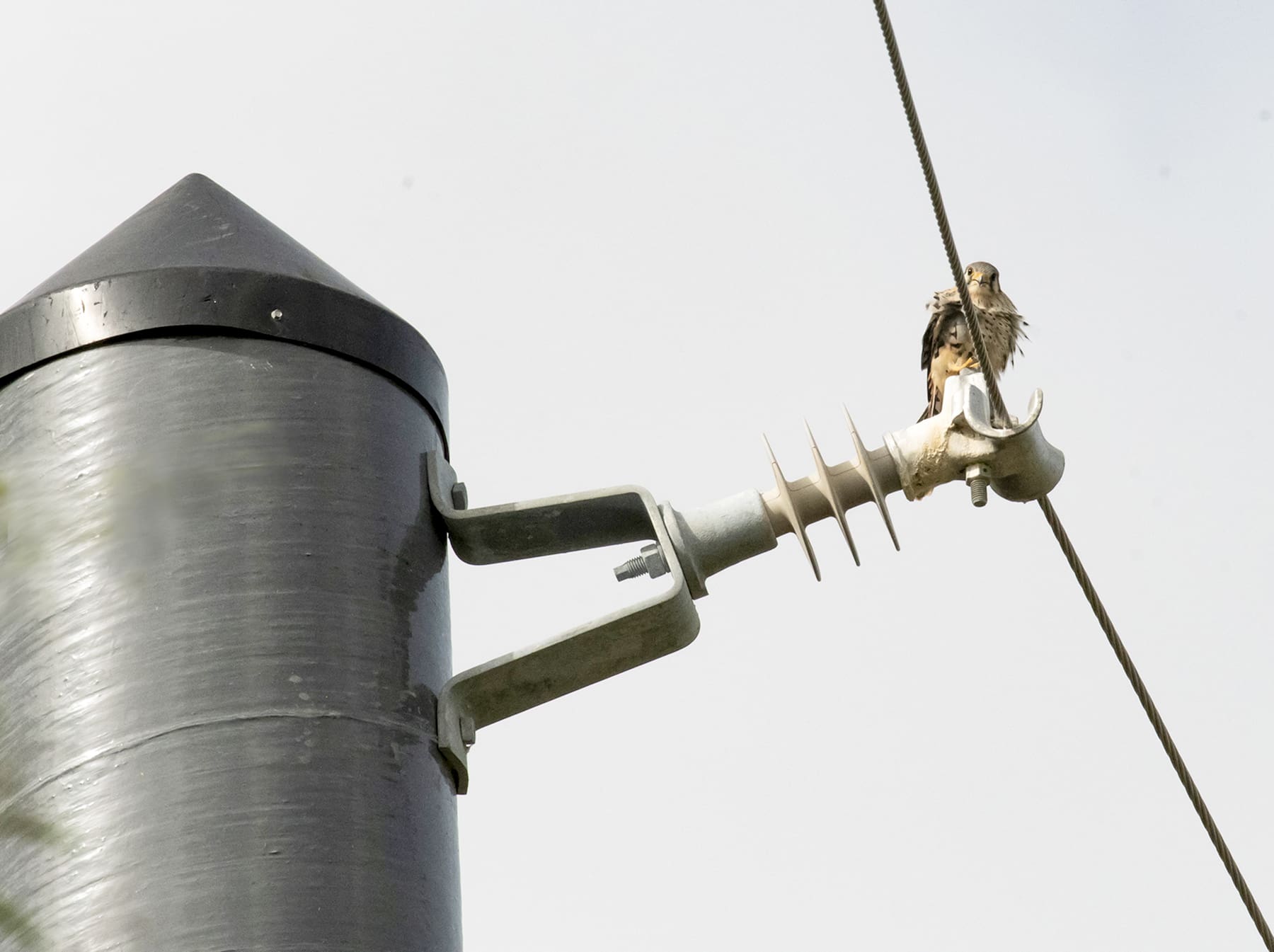
The points on the poles may actually be intended to keep other types of birds from building nests up there. That is not a concern for kestrels because they make their nests in cavities, like holes in trees. They are more interested in platforms for hunting and mating.
The arms supporting the wires on the new poles have now become important bird spaces, and the wires themselves are being more heavily used. The kestrels were quite noticeable this spring as they carried on their loud courtship activities. Near our house, their frequent loud meetups were hard to miss – and were conducted almost entirely on the wires.
I usually saw the female land on the wire first. I knew it was a female because her back and wings were both brown, while the males have blue wings and brown backs.
She might preen for a few minutes or stretch out her tail. Then she’d start making loud, sharp “kee-kee-kee” cries, which is what usually caught my attention. But her calling out was not meant for me. Soon she would look around and lift her tail to beckon her mate.
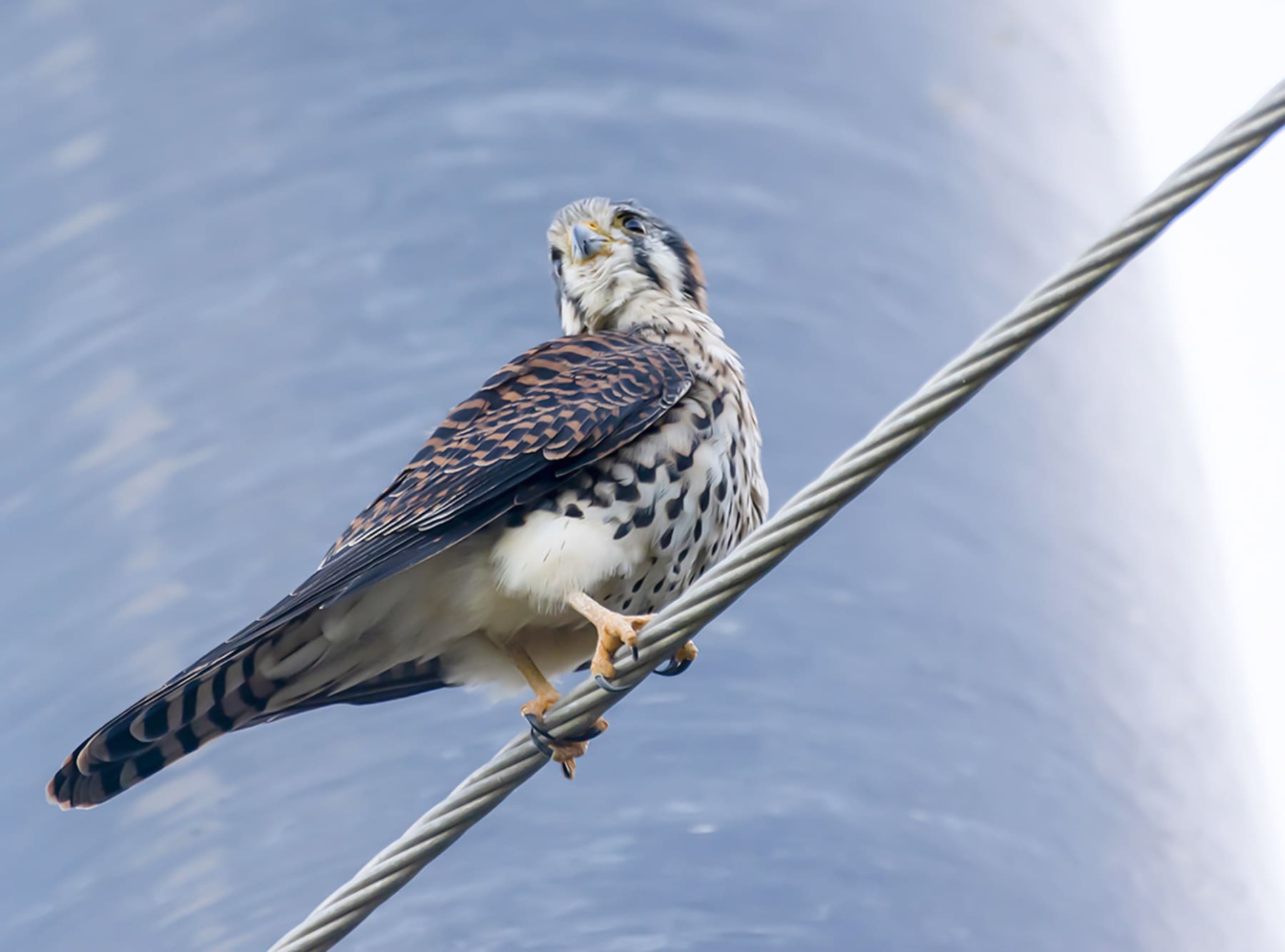
He would fly over, possibly sit nearby for a few minutes, and then suddenly press tightly against her as one or both of them yelled noisily. Soon afterward, they would fly off.
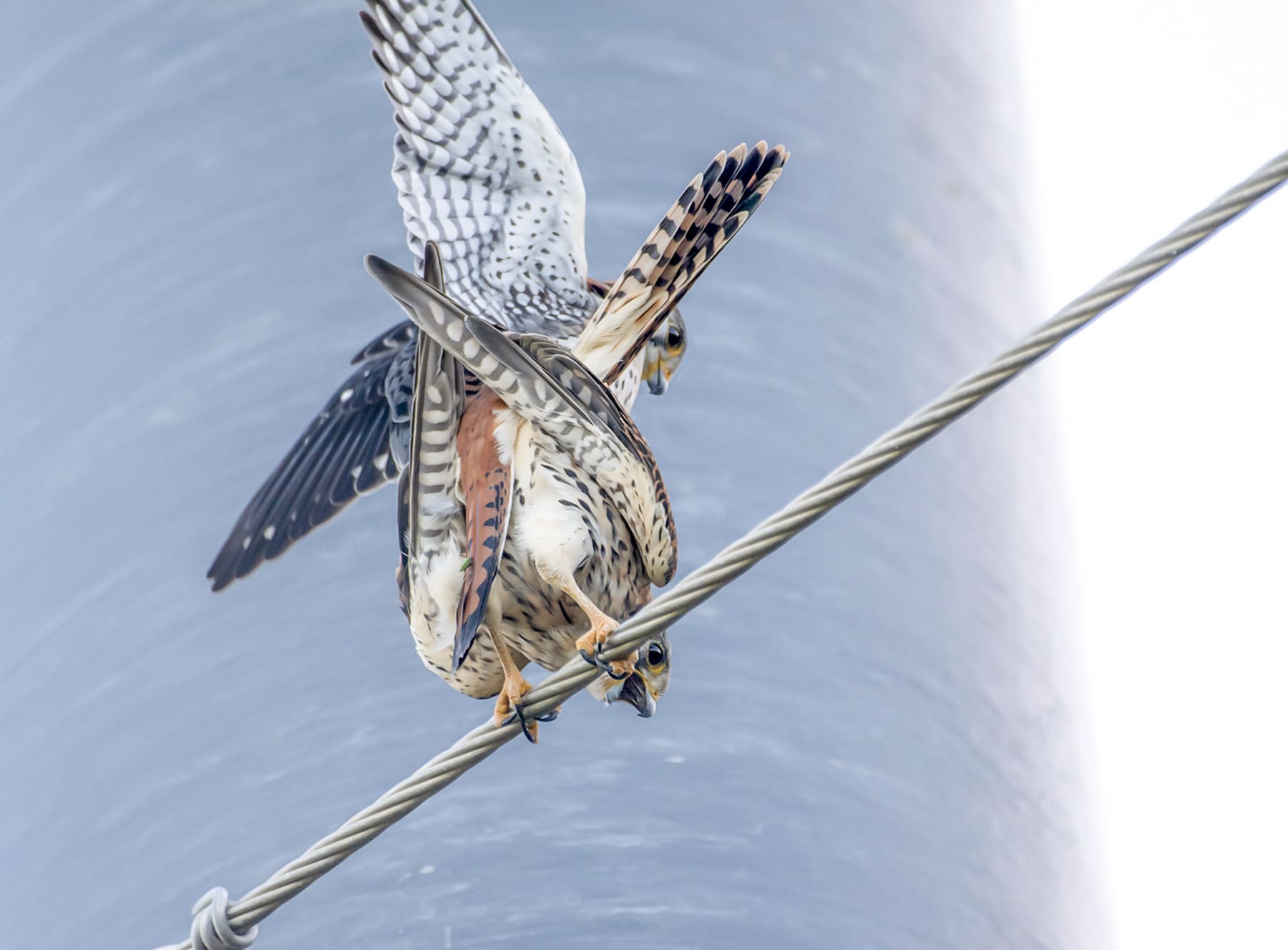
By contrast, they are quite secretive about their nests. Fortunately for me, one of my neighbors has a suitable tree hole for kestrel nesting right in front of his house, which is why there are usually some kestrels in our area.
A couple of years ago, I was able to hide under my neighbor’s deck and observe the babies peeking out, waiting impatiently for the parents to come feed them.
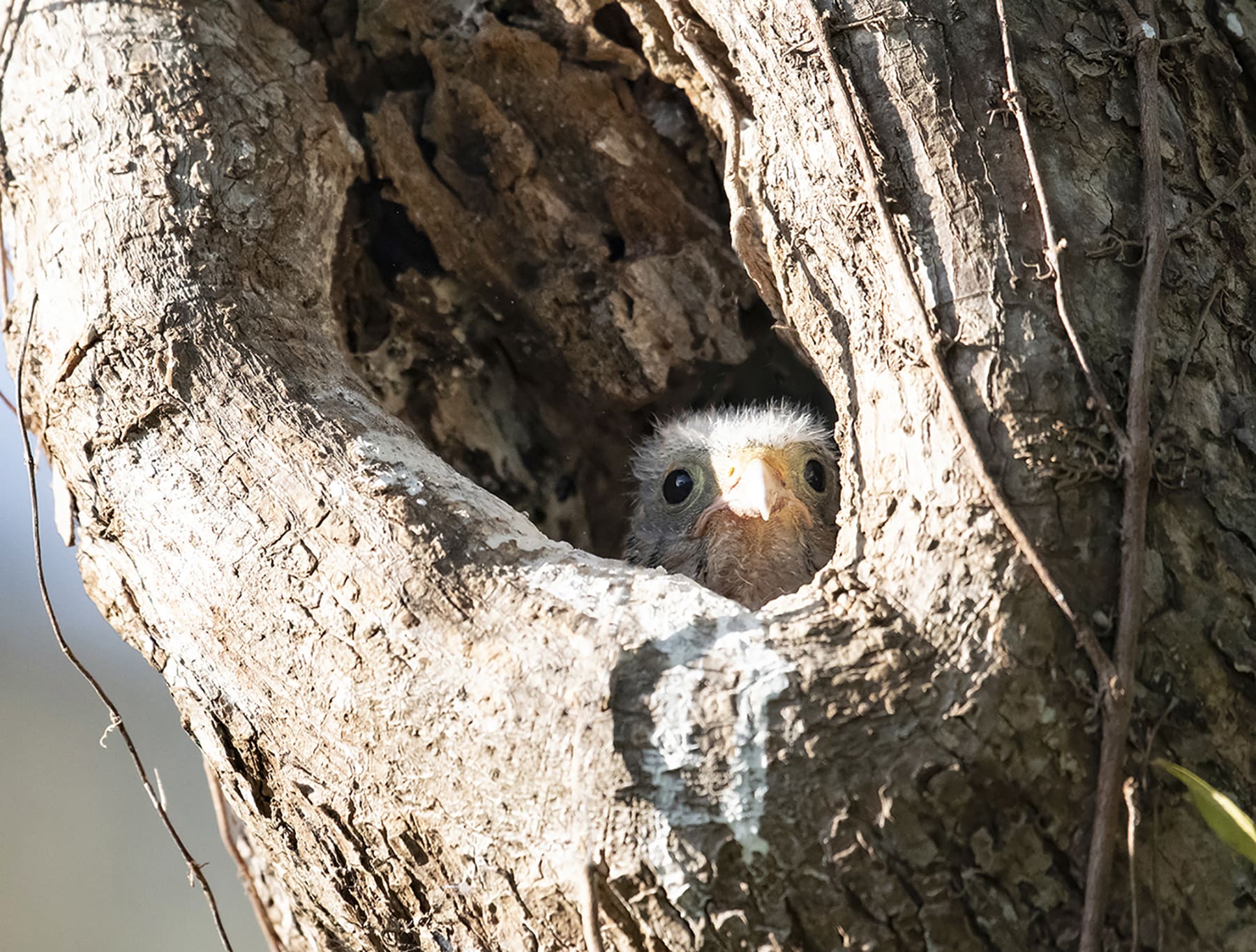
Then later, I watched the nestlings emerge from hiding and first test their wings. It took them a while to learn how to catch their own lizards, so for quite a long time, they would stand on the utility pole equipment and screech for the parents to bring them something to eat.
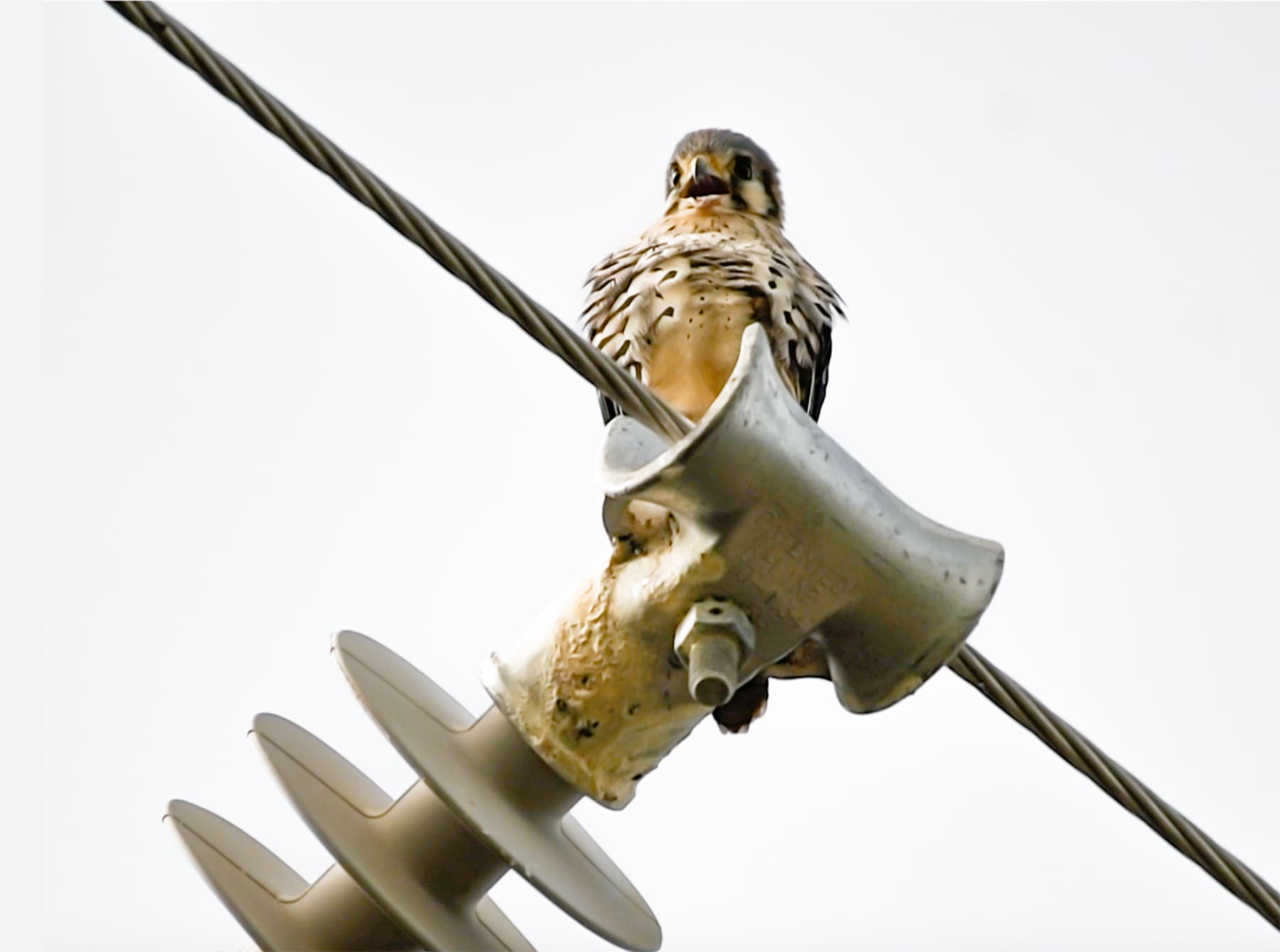
Overall, I don’t think the kestrels are as happy with the design of the composite poles. Still, they do seem to have figured out how to use the new equipment and the wires themselves to support their own purposes. So that’s good.
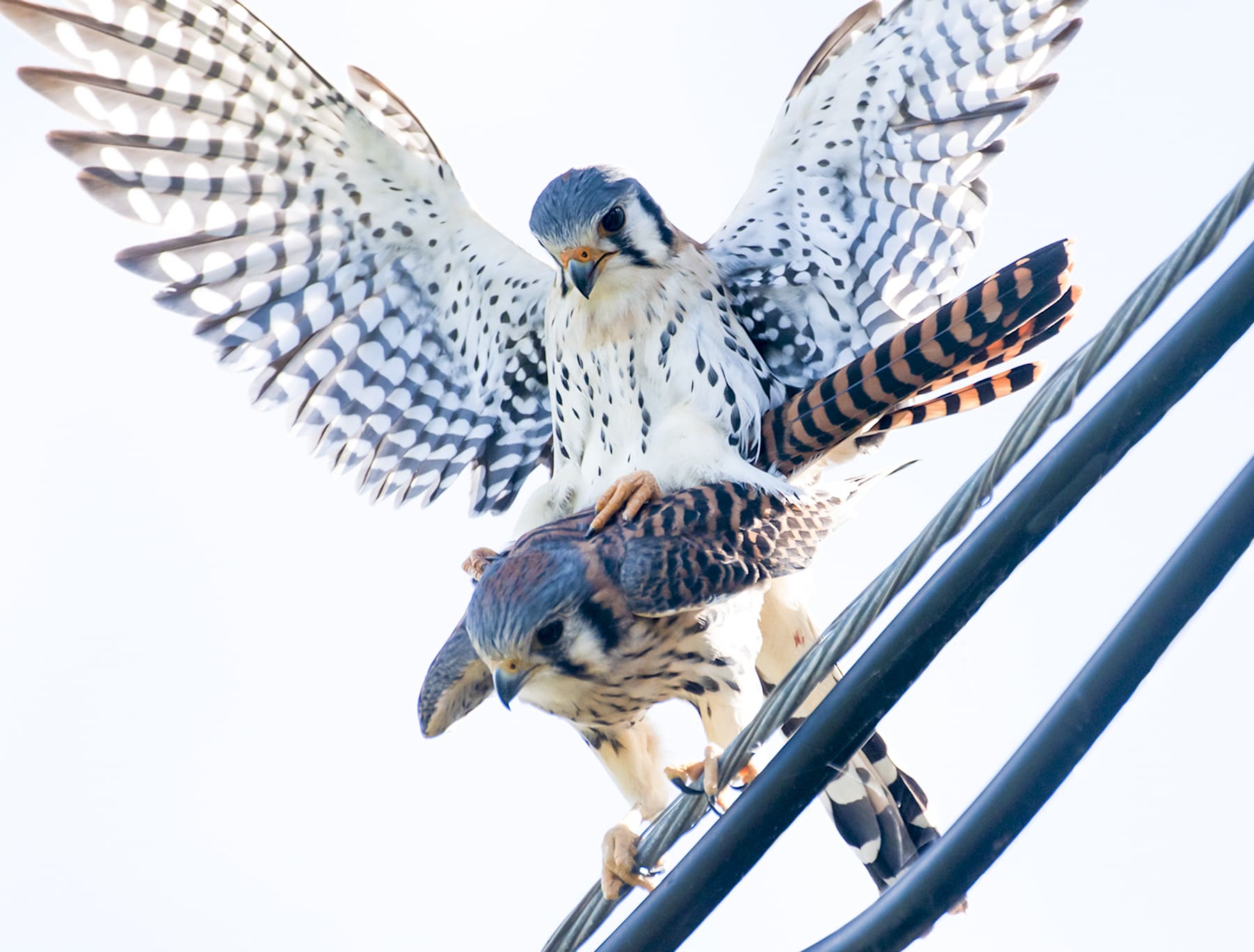
________________________________________________________________________
Gail Karlsson is an environmental lawyer, writer and photographer. She is the author of two books about the Virgin Islands – The Wild Life in an Island House, and the guide book Learning About Trees and Plants – A Project of the Unitarian Universalist Fellowship of St. John. She has also recently published A Birds’ Guide to The Battery and New York Harbor. Follow her on Instagram @gailkarlsson and gvkarlsson.blogspot.com.





